The Math To Becoming A Millionaire In Three Years Or Less
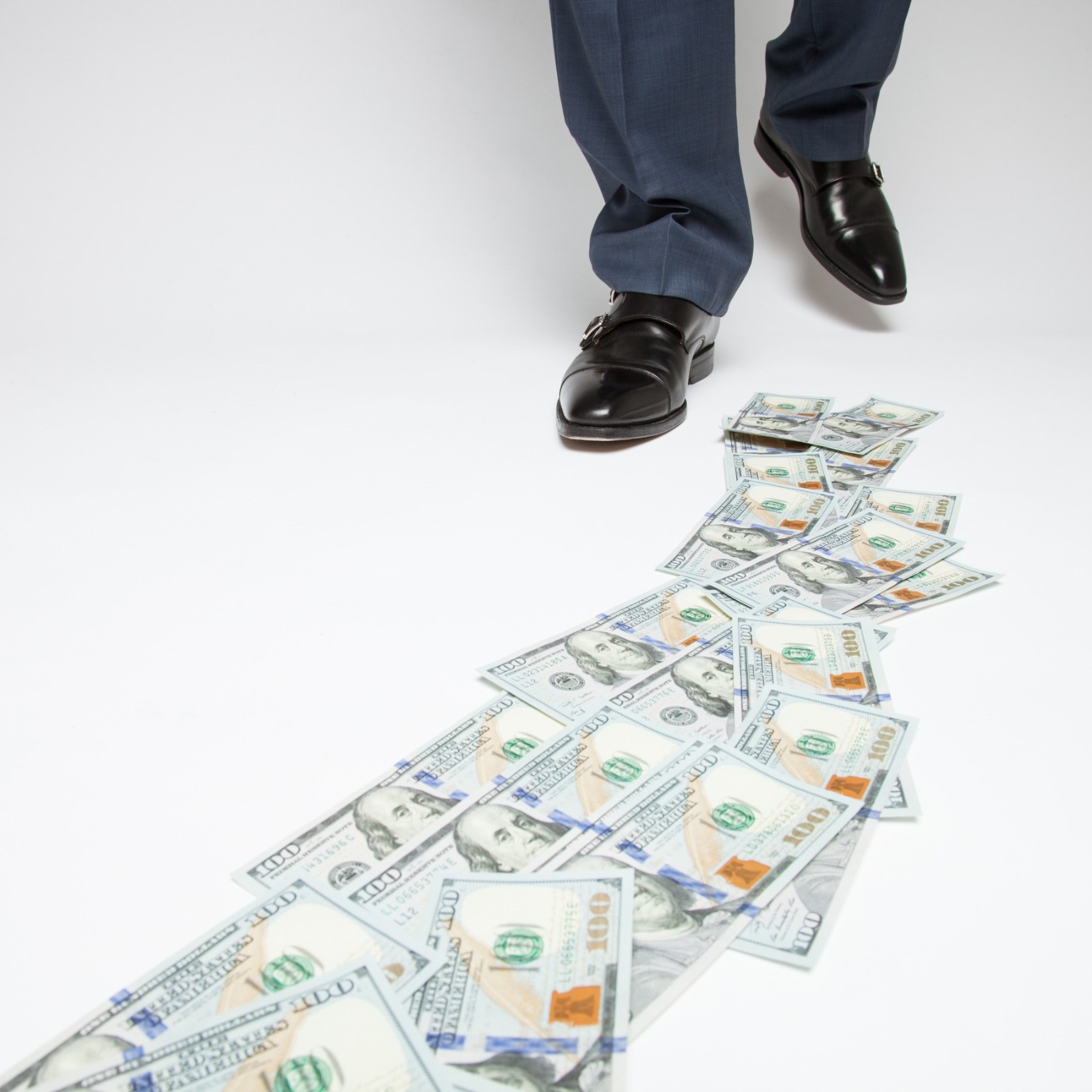
The thing you must remember about wealth is that money is a tool. Money is a tool that affords you options in life, nothing else. The saying goes, “Beggars can’t be choosers.” Having money is not a sin, the love of money is a sin. If you only want money to spend it as fast as you earn it, then you will always lose it.
Do you want to learn how to become a millionaire in 3 years? It’s a possible yet improbable endeavor based on your mindset, strategies, and how well you decide which calculated risks to take and which not to take.
Being a millionaire is not about being a celebrity or buying a fancy car that will rapidly lose its value the second you start the ignition. Acquiring and retaining wealth is something you can do if you treat money as a tool, save, invest, and actively try to make more money and live below your means. Here are 10 ways you can learn how to become a millionaire in 3 years.
1. Start Getting Out of Debt Today
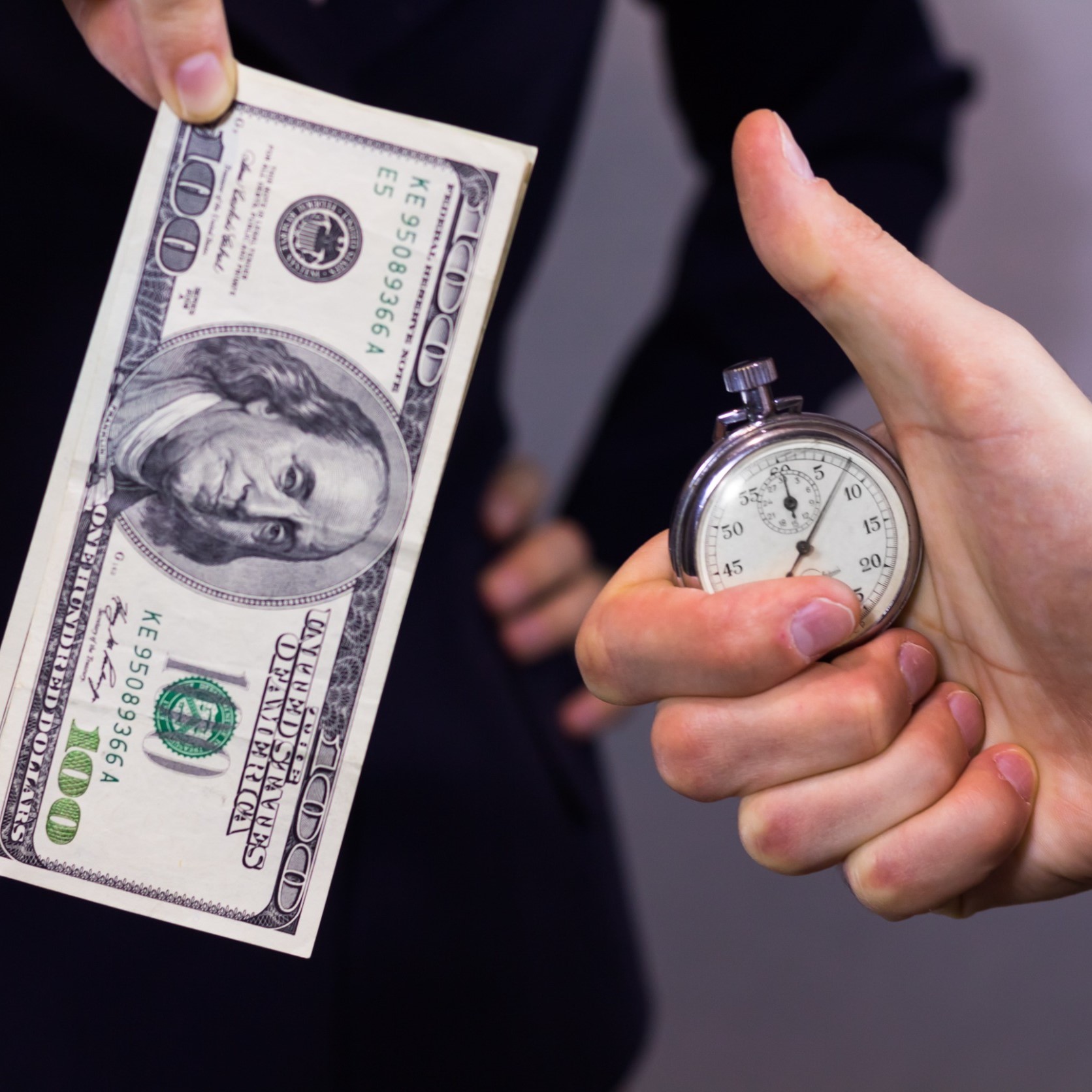
Rich people do not have crippling debt. Even phony people who show off and only pretend to be rich strive to keep their crippling debt secret. If you have crippling debt and a larger proportion of your paycheck is delegated for paying bills than saving money, then start dealing with the issue now. You can reset the clock on learning how to become a millionaire in 3 years and restart it later.
Consult with a financial advisor or debt management expert. Do not pay others to consolidate or eliminate your debt on your behalf. Contact all of your debtors and try to arrangements to pay off debts on a delayed schedule, don’t ignore them. Eliminate all debt, or at least get on that road, before worrying about becoming a millionaire.
2. Repair Your Credit

You may need to apply for a loan, get a cosigner for a loan, or have your credit rating examined for a future business venture opportunity in the course of trying to become a millionaire. Failing to prepare is preparing to fail. It can take a decade for a bankruptcy to automatically delete itself from a credit report. You can get a secured credit card, which requires a cash deposit to draw upon, to slowly build up your credit score with timely payments. Depending on how bad your credit score is, it’s a process that can take years.
3. Start Saving Money

If you have debt problems or issues with financial literacy then you need to take these initial steps to appreciate money as a tool, not an end within itself. Many people who win large-scale lotteries lose every penny within three to five years. If you can’t save a few bucks from every paycheck without wasting it, how can you hold onto millions of dollars?
Save a few bucks from every paycheck. Online banks allow you to auto-pay bills and auto-transfer predetermined amounts into savings accounts at your discretion. Try to save 5% to 15% of every paycheck.
4. Live Below Your Means

Bill Gates is arguably the 5th richest man in the world and has a net worth of about $154 billion. Gates dresses like an office worker with so sense of fashion style. If you had no idea what Gates looked like, you probably wouldn’t believe his image matched the name if someone showed you his photo. Rich people save and hoard money and live below their means to expand their wealth as much as possible.
Live below your means and downsize your life as much as possible. Stop buying brand-name goods and buy generic. Stop trying to keep up with the Joneses. You can learn how to become a millionaire in 3 years by following these principles.
5. Generate Multiple Income Streams

Your best chance of learning how to become a millionaire in 3 years is to become your own first investor. Leverage any skills or certifications you have in the online gig economy. You should at least try to work one job and a side gig to increase your income. Brainstorm how to incrementally and realistically increase your present income. If you can make a little money now, you can make a lot more money later with the right vision.
6. Develop Business Plans

The most crucial way to learn how to become a millionaire in 3 years is to develop ambitious but realistic business plans. What kind of business could you launch within a year? Do you qualify for a business loan? What product or service can you offer that would differentiate you from competitors? Do you have a business plan that identifies your demographic and how to keep them? Unless you win the lottery, you need to develop a business that will prosper based on local market conditions, your ability to source supplies, available demographics, and your skill set.
7. You Don’t Need a Lot of Money to Launch a Business
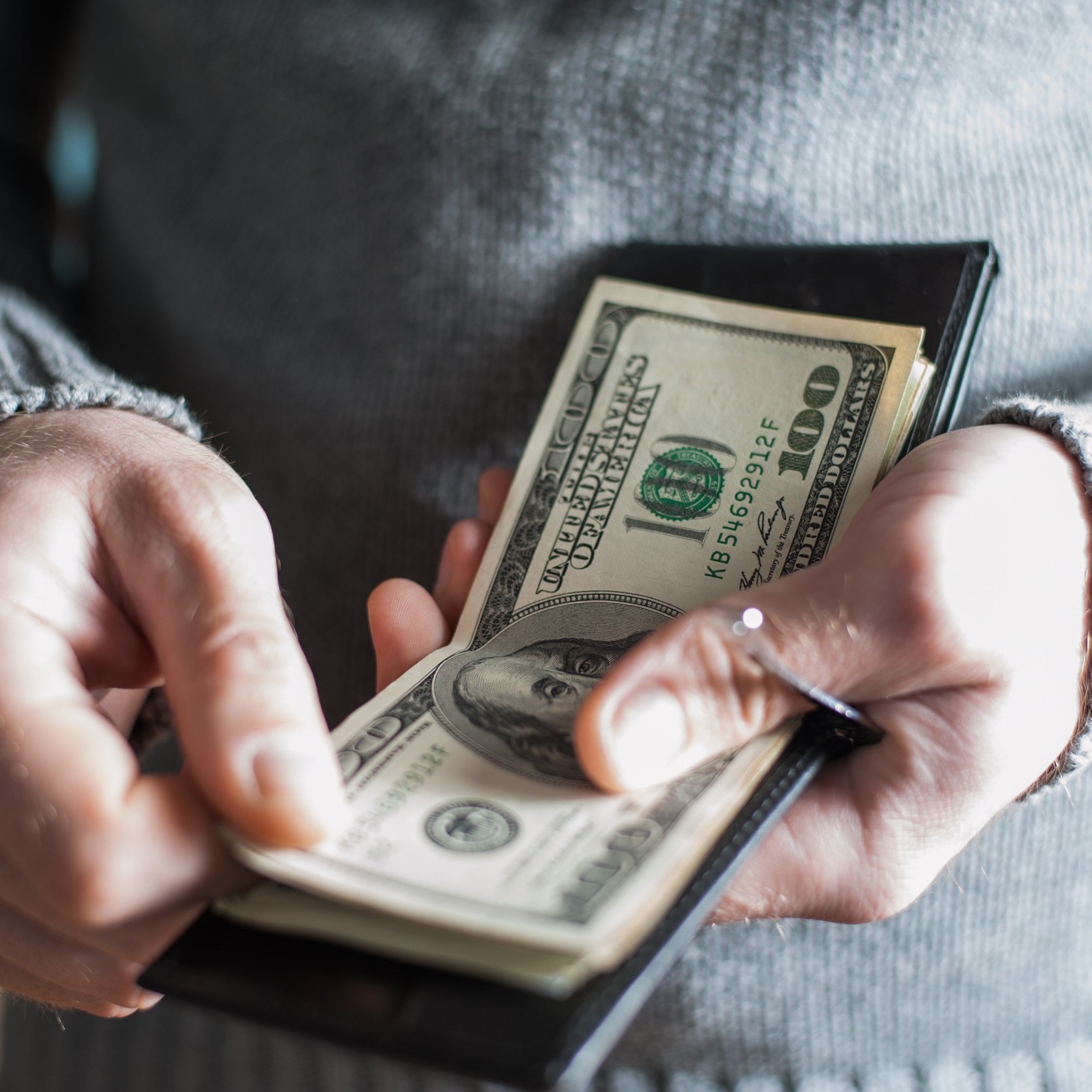
Facebook started in a college dormitory; half of the planet is now connected to it. Amazon was launched in Jeff Bezos’s garage. Both companies are worth hundreds of billions now. Big things start in small ways, so don’t get ahead of yourself. There are many businesses and small franchises that you launch for $25,000 or a lot less. No dream is realized without money so just put as much focus on the viability of your business plan.
8. Consult With Experts

You might know more millionaires than you realize. The average net worth of a millionaire is $2.2 million. The average dentist, restauranteur, laundromat owner, or other small business owner in your neighborhood may be a millionaire by those metrics. You may walk past them every day.
Talk to local business owners willing to chat with you about their experiences starting a business. Ask them questions relevant to your own ambitions to learn how to become a millionaire in 3 years.
9. Most Millionaires Don’t Have Millions in Cash
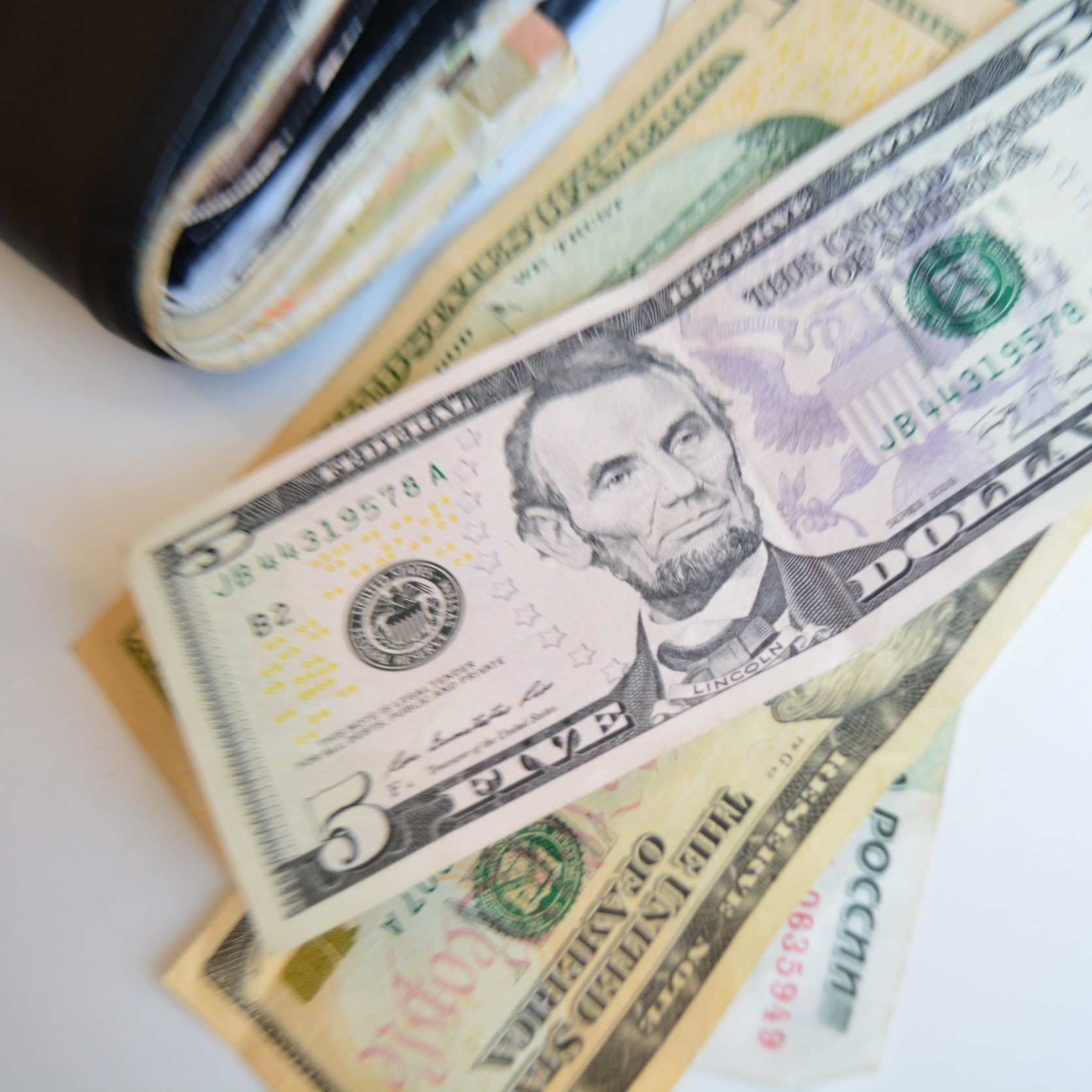
To calculate net worth, you must add up the value of all your assets, like money, investments, property, stocks, fine art, and vehicles, and then subtract any debts you have. A lot of millionaires are millionaires because they have expensive property, stocks, and investments that can be liquidated. Many millionaires never carry cash as a flex.
For example, owning a $1 million home and half a million in investments can technically make you a millionaire even if you only have tens of thousands in cash on hand. Being a millionaire does not necessarily mean having literally millions of dollars on hand. Making a shrewd business move at the right moment can make you a millionaire sooner than you think.
10. Invest

Study and research how other millionaires made their fortunes. Most merged shrewd business plans with investments. Take time to carefully research potential investment opportunities before making final decisions. Having a business, multiple income streams, and smart investments will make you richer sooner than later.
How to Become a Millionaire in 3 Years

Anything is possible in life, but nothing will be handed to you overnight, especially wealth. No one becomes a millionaire by accident and most lottery winners lose all their money. Get your finances in order. Make business plans and invest. Think about how to realistically implement your plans and goals and even you could learn how to become a millionaire in 3 years.
Read More
How To Become an Online Millionaire (Updated for 2024)
How Can I Become a Millionaire With No Money?
6 Key Factors to Consider When Choosing a Bank
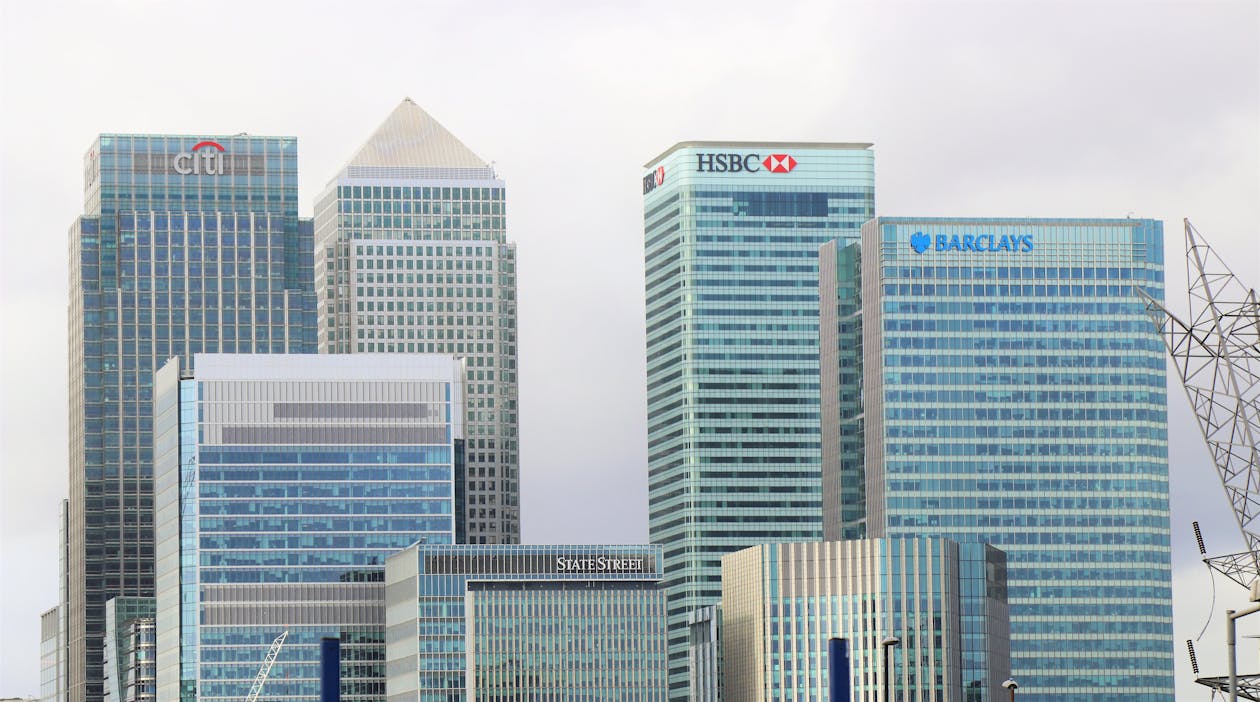
Choosing the best bank is critical for your financial needs and health. The right banking institution will let you access the best financial services and products. Considering the many banks available today, finding the one suitable for your needs isn’t easy. Selecting a bank you can trust isn’t just about proximity or being carried away by marketing hype. It requires careful consideration and in-depth research. Discussed below are six key factors to consider when choosing a bank.
1.Mobile and online banking services
Mobile and online banking involves using electronic platforms to complete different financial transactions and handle banking tasks. Online or Internet banking includes using a banking website or a web-based platform to access financial services and products over the Internet. With mobile banking, you use a mobile device to access banking services. Online and mobile banking offers multiple benefits to the modern consumer. They include:
- Real-time updates: With mobile and online banking platforms, you can track your transaction history, set up alerts for particular activities, or monitor your account balances in real-time
- Convenience: Thanks to mobile and online banking services like Credit Union Online Banking, you can access your bank accounts, manage your finances, conduct transactions, and deposit money/ checks on the go or from the comfort of your home. Also, these services are available round-the-clock, meaning you can deal with your banking activities at any time
2.Security measures
Your financial information, if not secured, can fall into the hands of a cybercriminal, leading to fraud and identity theft. As such, it’s important to look at the security measures the banks you’re considering have implemented to ensure your financial data is secure. Some of the security features to look for in a bank include:
- Two-factor authentication: It’s an added security layer besides your password and username used when accessing your bank account
- Encryption: It’s a tactic banking institutions use to encode data to ensure no unauthorized persons can see it. You can check your bank’s encryption information on its website
- Account monitoring services: Find out if your bank provides instant banking alerts to inform you of any activity on your account
- Automatic logoff: Ensure your bank’s app or site will log you out automatically after a particular period of inactivity
3.Interest rates
Different banks offer different interest rates for different accounts. While some banking institutions provide low-interest rates for savings, others have more favorable options. When looking to open a savings account, compare accounts from different banks and opt for one with the highest interest rates to grow your savings. If you wish to get a loan, look at the interest rates because they’ll determine your overall loan cost. When selecting a bank to partner with, compare their interest rates and opt for the one with the most favorable rates for your needs.
4.Reputation
When looking for a banking institution, you want to ensure the one you’re working with is reputable. To find a bank with a good reputation, consider:
- Checking online reviews, testimonials, and ratings: These will give you an idea of past client experiences, which are vital in determining customer satisfaction
- Researching the bank’s financial stability: Visiting independent agency websites like Better Business Bureau (BBB) and Federal Deposit Insurance Corporation (FDIC) to learn about the bank’s performance, history, and ratings. You should also look at its financial statements to determine its profitability. Opt for a bank with sufficient reserves, liquidity, and capital because it can withstand hard economic times
5.Banking products and services
The right bank to settle for should meet your financial needs and offer the products or services you seek. When selecting a banking institution, look at the various products and services, plus your current and future financial needs, to ensure they have what you want. You should also consider the eligibility criteria for the products you’re looking for. Whether you want a credit card, loan, or other product, consider how easy they are to access before settling for a specific bank.
6.Customer support
Customer support is another major factor to consider when choosing a bank. You want an institution that’s responsive and available whenever you need help. To find the best bank for your needs, consider:
- If customer service is available 24/7
- How fast they respond to complaints or queries
- The number of customer service channels they offer
Looking at these things makes a significant difference with regard to your peace of mind and convenience when handling your finances. The best bank should offer round-the-clock customer support and respond promptly to customer concerns. They should also offer multiple customer support channels, including email, phone, live chat, and more.
Endnote
Selecting the right bank for your financial needs is vital for your peace of mind. Familiarize yourself with the key factors to consider when choosing a bank.
Historical Hobbies: Dangerous Pastimes Our Ancestors Enjoyed

Throughout history, people have engaged in various hobbies for recreation, community bonding, and personal fulfillment. While many of these activities have evolved into safer forms or fallen out of favor, some of our ancestors’ favorite pastimes were surprisingly perilous by today’s standards. Understanding these dangerous historical hobbies not only gives us insight into past lifestyles but also reflects the changes in societal attitudes towards safety and risk.
Dueling: A Matter of Honor

Dueling, once considered an honorable way to resolve disputes among gentlemen, was a common practice in many parts of Europe and the Americas until the late 19th century. Participants would face off with swords or pistols to defend their honor, often resulting in serious injury or death. This hobby was not only risky but also highly ritualized, with strict codes of conduct that dictated the terms and conditions of the duel. Despite its danger, dueling was a popular means of settling personal scores among the elite, and its dramatic nature continues to fascinate people today, often being romanticized in films and literature.
Fox Tossing: A Deadly Game

In the 17th and 18th centuries, the aristocracy in Europe indulged in a now-obscure activity known as fox tossing. Participants would throw live foxes and other small animals high into the air using slings with a canvas sheet, aiming to see who could toss the animal the highest. This cruel sport resulted in the injury and death of both animals and sometimes the participants, if the frightened animals attacked. Fox tossing highlights the drastic change in how animal welfare and entertainment have evolved over the centuries.
Bare-knuckle Boxing: Brutal Bouts
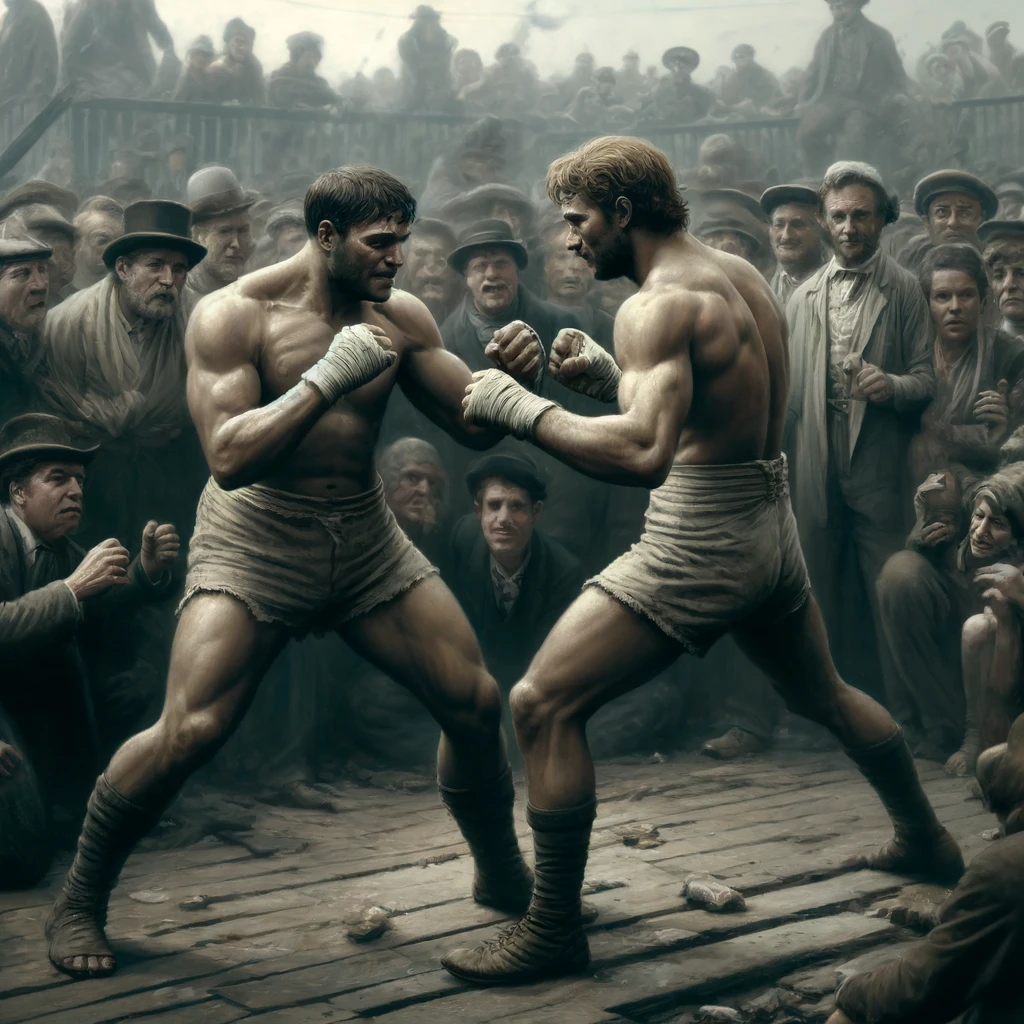
Before the Marquess of Queensberry rules introduced gloves and rounds in the late 19th century, boxing matches were often bare-knuckle, brutal affairs that continued until one fighter could no longer stand. These contests could last for hours, leading to severe injuries and long-term health issues for the participants. Today, while boxing remains a popular sport, it is heavily regulated to ensure the safety of fighters, reflecting a broader societal shift towards the protection and health of athletes.
Ladder Dances and Stilt Walking: Perilous Performances

In medieval and early modern Europe, performances often involved dangerous feats such as ladder dances and stilt walking. Performers would entertain crowds by dancing on top of wobbly ladders or walking on tall stilts without any safety measures, risking falls that could be fatal. These acts were performed at fairs and festivals, thrilling audiences with the high stakes of acrobatic skill and balance. Nowadays, similar performances are safeguarded with safety harnesses and mats, prioritizing the well-being of performers.
Ballooning: The Thrill of Early Flight

In the 18th century, hot air ballooning became a fashionable hobby among the adventurous, who were fascinated by the possibility of flight. Early balloons, which were difficult to control and prone to accidents, posed significant risks to those daring enough to ascend in a basket under a silk or paper balloon. Despite the dangers, ballooning captured the imaginations of many and laid the groundwork for modern aeronautics, with today’s balloon flights being far safer due to technological and material advancements.
These Historical Hobbies Show Progress

Exploring the dangerous hobbies of the past not only sheds light on what entertained our ancestors but also helps us appreciate the progress in safety and ethical standards. While today’s hobbies might seem safer and more sanitized, they continue to be influenced by the thrill-seeking and adventurous spirit of our forebearers. Understanding these historical activities provides a window into the cultural and social norms of the past, reminding us of how far we have come in balancing entertainment with safety.
Read More
Facing Criminal Charges? Here’s What It Might Cost You
If you’ve been charged with a criminal offense, you may feel overwhelmed by all the implications of the charges. According to Leverson Budke, the total fee for a criminal lawyer can be between $1000 to $10,000, while hourly rates can be $150 to $500 per hour. These amounts may lead you to wonder how to finance that fee. Here is some information you may need to know regarding criminal lawyer fees:
Criminal Attorneys Understand Your Charges
A criminal attorney is knowledgeable about the laws in your state regarding criminal charges. One example might be a charge of embezzlement, considered a white-collar (non-violent) crime. This type of charge would be made against someone who was placed in charge of some money and then used that money in an unauthorized way. These charges can have many implications for your future, so you’ll need a lawyer to help you.
Criminal Cases Can Become Complex
A skilled attorney would know that if you are involved in a front-end collision and charged with vehicular manslaughter, there would have to be evidence you were driving irresponsibly. However, your attorney may be able to blame a feature inside the victim’s car. After all, according to the Auto Glass Safety Council, in a front-end collision, the windshield serves as over 40% of that car’s structural safety. Furthermore, if the accident is a rollover, the windshield is meant to provide 60% of its ability to shield passengers.
Criminal Attorney Payments by Flat Fee
One of the common ways a lawyer may ask to be paid is by a flat fee. According to the New York Criminal Lawyer, a flat fee is a fixed amount that a lawyer will quote you at the beginning of the case. The website estimates these charges could range from $2000 to $10,000. The flat fee amount will depend on the severity of the crime and on whether the case must go to court.
Criminal Attorney Payments by Hourly Fee
Many lawyers prefer to be paid by the hour, and they often bill their clients in 15-minute increments. Hourly rates are usually preferred when the nature of the case is so complex that the attorney can’t precisely estimate a flat fee. These fees can be increased by the experience and notoriety a lawyer has. According to Canterbury Law Group, a criminal lawyer with many years of experience can ask for $250 to $750 per hour.
Attorney Payments by Contingency Fee
Although criminal lawyers cannot charge a contingency fee, you may hear the term used and be curious about its meaning. According to the American Bar Association, a contingency fee is used when a lawyer agrees to be paid a specific percentage of the amount to you if you win the case. The same website cites one-third of the percentage of the case award as a typical contingency amount. As you may understand, this wouldn’t be practical in a criminal case since there is no monetary award.
Choosing a Public Defender
People who can’t afford an attorney will be provided with the help of a public defender. These lawyers will defend you for a lower fee or no cost. To qualify for a public defender, you must prove you cannot afford an attorney’s fee. The court is responsible for checking your assets to verify your inability to pay the fee.
Selecting the right lawyer can be challenging since the legal stakes are so high. However, when interviewing prospective lawyers, you can ask if they have had experience in the case you are charged with. If the case is likely to go to court, look for an attorney with experience trying cases in court. Be sure you feel confident with your chosen lawyer since you’ll trust them to secure your freedom.
12 Sporting Events That Have Become Exorbitantly Expensive

In recent years, the cost of attending sporting events has skyrocketed, with ticket prices, travel expenses, and associated costs reaching levels that might require a small loan for many fans. The allure of live sports, coupled with the growth of international audiences and high-stakes games, has transformed these events into luxurious experiences. Here, we explore 12 sporting events where the price of admission has soared, becoming a symbol of status and exclusivity.
1. The Super Bowl

The pinnacle of American football, the Super Bowl commands exorbitant ticket prices, with the average cost often running into thousands of dollars. In addition to this, the price of accommodation and travel in the host city, as well as attending the Super Bowl, can feel like purchasing a high-end luxury item.
2. The FIFA World Cup Final

As the world’s most popular sporting event, the FIFA World Cup Final draws fans from every corner of the globe. Ticket prices soar as the tournament progresses, with the final match’s tickets being particularly pricey, reflecting the global demand.
3. The Masters Golf Tournament

Held at the prestigious Augusta National Golf Club, The Masters is a bucket-list event for many golf enthusiasts. However, the limited ticket availability and the club’s exclusivity drive prices up, making it an expensive outing.
4. Wimbledon

The oldest tennis tournament in the world, Wimbledon, is synonymous with tradition and prestige. Securing tickets, particularly for the final matches, can cost a small fortune, not to mention the premium pricing of refreshments like the iconic strawberries and cream.
5. The Monaco Grand Prix

Formula 1’s crown jewel, the Monaco Grand Prix, offers not just a racing event but a glimpse into the lavish lifestyle of the rich and famous. The street circuit’s limited viewing spaces and the principality’s high-end hospitality options contribute to its hefty price tag.
6. The Olympic Games Opening Ceremony

The opening ceremony of the Olympics is a spectacle like no other, setting the tone for the games ahead. Tickets are in high demand, making them one of the priciest parts of the Olympic experience, alongside the cost of staying in the host city.
7. The Kentucky Derby

Dubbed “The Most Exciting Two Minutes In Sports,” the Kentucky Derby is not just about the horse racing but also the pageantry and fashion that accompany it. Attending the Derby in style, with access to exclusive areas, can be quite expensive.
8. The NBA Finals

Basketball fans dreaming of watching the NBA Finals live may need to prepare for sticker shock, especially if the series extends to a decisive Game 7. Prices vary depending on the teams and cities involved, but expect to pay a premium.
9. The UEFA Champions League Final

The UEFA Champions League Final, a cornerstone of European football, sees ticket prices soar as fans from across the continent vie for a chance to witness history. The immense popularity and prestige of the event make it one of the most sought-after and expensive sporting spectacles globally.
10. The Rugby World Cup Final

The Rugby World Cup Final, a pinnacle in the international rugby calendar, attracts fans from around the globe, driving ticket prices to premium levels. Hosted every four years, this event not only showcases the sport’s finest but also becomes a melting pot of cultures, contributing to its exclusivity and high costs. The fervor and unity it inspires come with a hefty price tag, making attendance a significant investment for enthusiasts.
11. The Tour de France

While the Tour de France offers more accessible viewing options compared to other events, securing prime spots for key stages, especially the iconic finish on the Champs-Élysées, can be costly. The event’s extensive route through varied terrains adds to the challenge and expense for followers keen on experiencing the pinnacle of cycling up close.
12. The Singapore Grand Prix

Another gem in the Formula 1 calendar, the Singapore Grand Prix offers the unique experience of a night race in a city that blends high-octane action with luxury. The experience comes with a price tag to match, from grandstand seats to exclusive paddock clubs.
High-Cost Sporting Events Are Part of a Broader Trend

The transformation of sporting events into luxurious, high-cost experiences reflects broader trends in entertainment and society. While the allure of live sports remains undiminished, the rising costs associated with attending these iconic events highlight the challenges and changes facing fans around the world. As the sports industry continues to evolve, finding a balance between exclusivity and accessibility will be crucial to maintaining the spirit and inclusivity of live sports.
Read More:
Elevate Your Life: 10 Shocking Reasons Why Selfishness Is the Path to Happiness












